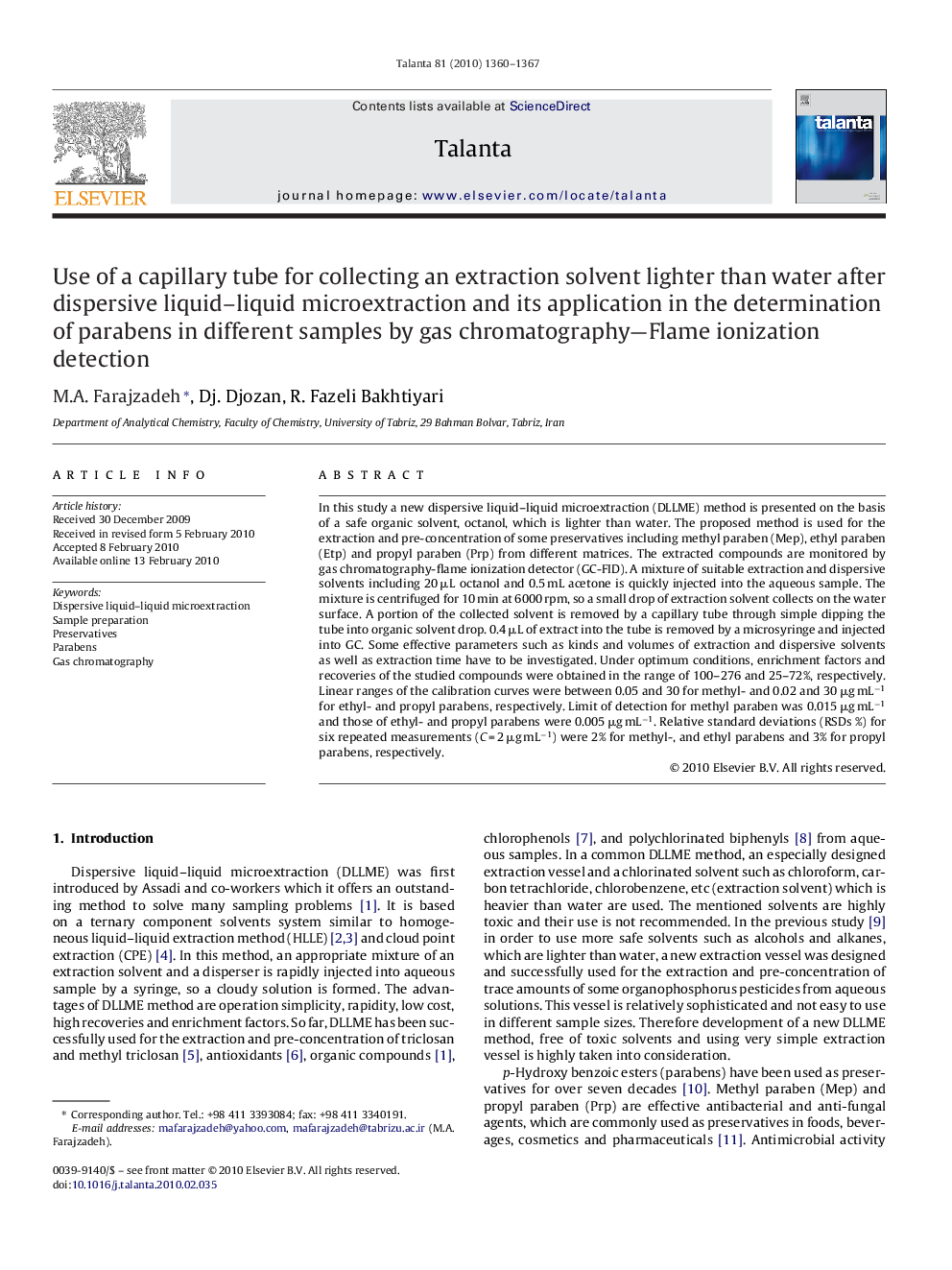| کد مقاله | کد نشریه | سال انتشار | مقاله انگلیسی | نسخه تمام متن |
|---|---|---|---|---|
| 1242639 | 1645368 | 2010 | 8 صفحه PDF | دانلود رایگان |

In this study a new dispersive liquid–liquid microextraction (DLLME) method is presented on the basis of a safe organic solvent, octanol, which is lighter than water. The proposed method is used for the extraction and pre-concentration of some preservatives including methyl paraben (Mep), ethyl paraben (Etp) and propyl paraben (Prp) from different matrices. The extracted compounds are monitored by gas chromatography-flame ionization detector (GC-FID). A mixture of suitable extraction and dispersive solvents including 20 μL octanol and 0.5 mL acetone is quickly injected into the aqueous sample. The mixture is centrifuged for 10 min at 6000 rpm, so a small drop of extraction solvent collects on the water surface. A portion of the collected solvent is removed by a capillary tube through simple dipping the tube into organic solvent drop. 0.4 μL of extract into the tube is removed by a microsyringe and injected into GC. Some effective parameters such as kinds and volumes of extraction and dispersive solvents as well as extraction time have to be investigated. Under optimum conditions, enrichment factors and recoveries of the studied compounds were obtained in the range of 100–276 and 25–72%, respectively. Linear ranges of the calibration curves were between 0.05 and 30 for methyl- and 0.02 and 30 μg mL−1 for ethyl- and propyl parabens, respectively. Limit of detection for methyl paraben was 0.015 μg mL−1 and those of ethyl- and propyl parabens were 0.005 μg mL−1. Relative standard deviations (RSDs %) for six repeated measurements (C = 2 μg mL−1) were 2% for methyl-, and ethyl parabens and 3% for propyl parabens, respectively.
Journal: Talanta - Volume 81, Issues 4–5, 15 June 2010, Pages 1360–1367